December 31, 2009
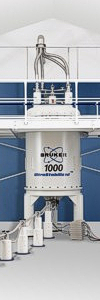
| Congratulations, Mister Keller
For the end-of-year entry I have saved what I believe is the most memorable NMR event of 2009, one for which this year will be remembered by the NMR community. I refer to the installation of the first 1 GHz (1000 MHz) High-Resolution NMR spectrometer which has been successfully energized a few weeks ago at RALF-NMR (an European Large Scale NMR Facility) in Lyon, France. It is still too early to have any meaningful User-site specifications such as resolution, hump test, sensitivity for various nuclei, helium boil-off rate, etc. But the magnet is on field and the spectrometer is operative !!!
The instrument, named AVANCE 1000 was produced by Bruker Biospin and it represents an unquestionable triumph of European technology. In particular, this regards the persistent, ultra-stabilized 23.5 Tesla magnet with its standard bore of 54 mm (diameter of the axial access tube housing the room temperature shims and the probes) and high-resolution NMR field quality (stability and homogeneity of the order of 1 part in 10^11). Apart from "frivolous" facts such as the round 1H Larmor frequency and the fact that it is a world first, the realization of this magnet is an amazing achievement since its field touches what is presently considered the utmost limit beyond which, for a number of technological reasons, superconducting devices with zero power consumption can not go, not without being combined with resistive Bitter magnets consuming tens of megawatts (see the entry of 15 July 2007 and the earlier one of 12 June 2006).
The vicinity to this technological limit is best evidenced by the time it took to get so close. The first 200 MHz magnets were around already by the end of 1964 and the 300 MHz mark was reached at the end of 1970 (those were Varian products; see the diagram on page 37 of the link). It took about 7 years to duplicate that field value: the first NMR-worthy 600 MHz supercon (not quite persistent, but close enough) was build in 1977 by Josef Dadok (a Czech staying with Aksel Bothner-By at Carnegie Mellon Institute) and by 1979 it was commissioned for routine service. But the much smaller relative jump from 600 to 1000 MHz has taken more than 30 years! Short of any revolution (one can never exclude one) it seems that, for the time being, that's it! Any further progress would be probably too small and take too much effort and money to be worth the trouble. Already the present installation in Lyon has cost 11.7 million euros (16 M$) and it will be almost certainly criticized by many for delivering, in terms of applications, results very similar to those available from much cheaper 800 and 900 MHz devices. Not that I share such criticism - European Union can well afford one or even a few such front-line units; these are endeavors which create new technologies and jobs!
Finally, I must explain the title of this entry. Clearly, it indicates Tony Keller, the "historic" Bruker CEO and NMR gray eminence and, just as clearly, the primary mover behind the 1 GHz system. What needs an explanation is the apparently cold wording, void of titles, which I actually intend as a honor.
I first met Mister Keller in 1975 at the beginning of my 6-year stitch with Bruker. I was in Karlsruhe (Germany) for a two-month training before taking over the Italian Bruker office. The top Bruker guy was then Gunther Laukien, of course, while Mister Knüttel and Mister Keller were the heads of the Pulsed-NMR and HR-NMR departments, respectively [a]. And Mister Keller was certainly no Tony for any of us lower-echelon guys, and not just because the easy-going American habits did not yet reach Europe. The main reason was that we were a bit scared of him: though he was a fair boss, he spoke little, smiled little, erred very rarely, and made sharp on-the-spot decisions which were not appealable.
I got a glimpse of the real man behind this stern CEO image one late evening when I was trying to shim a WP80 [b]. He first stopped a while behind my shoulders observing the displayed lock signal and when I said that I thought the homogeneity was pretty good, he just uttered "the instrument can do better", which was Mister Keller as usual. But then he went to a nearby bench and started tinkering with a solder iron around a WH90 probe. It was late evening, so I got curious and asked him what he was up to. He answered with a satisfied smile that he was putting together a triple resonance probe to be delivered next morning. I have finished my shimming (the instrument indeed could do better) and left at 9 pm, while he stayed on: a sharp CEO personally assembling a device to be delivered next day, and enjoying it! Something I, a naive product of the academy, would have never expected to happen in a high-tech German industry.
So, I wonder: if, back in 1975, Mister Keller were not a Mister Keller but a shoulder-slapping Tony, would we have a 1 GHz NMR spectrometer today? I doubt it. Add to this the fact that about a decade ago an age-mellowed Tony Keller had let it be known that he would only retire after Bruker produced a 1 GHz HR-NMR magnet, and you should understand why I earnestly repeat: Congratulations, Mister Keller.
Notes:
a) In 1975 HR-NMR was mostly pulsed, but the historic CW/FT (swept/pulsed) alternative was still reflected in the anachronistic way Bruker departments were named.
b) WP80 was an iron-based spectrometer which was then being launched on the market.
|
December 19, 2009
Kindle Edition:
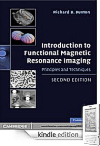
Richard Buxton
Intro to fMRI
| New MRI books
This Autumn many new MRI monographs have hit the street, so to say, even though several announced 2009 titles seem to be delayed and might not make it to the presses in time.
There is enough for everybody:
Introductory texts:
-
Mri at a Glance by Catherine Westbrook, Wiley, ISBN 978-1405192552.
2nd Edition of a very popular book. First printed in 2002.
Technical titles:
-
Introduction to Functional Magnetic Resonance Imaging
by Richard Buxton, Cambridge University Press, ISBN 978-0521899956.
2nd Edition of a very popular monograph originally printed in 2001.
- Clinical MR Spectroscopy: Techniques and Applications
by Peter Barker, Alberto Bizzi, Nicola De Stefano, Rao Gullapalli, Doris Lin,
Cambridge University Press, ISBN 978-0521868983.
This is not quite MRI, but close enough ... Actually, there are too few texts dealing
with NMR spectra acquired using [more or less] standard MRI scanners.
-
Improved Signal and Image Interpolation in Biomedical Applications:
The Case of Magnetic Resonance Imaging (MRI)
by Carlo Ciulla, Medical Information Science Reference, ISBN 978-1605662022.
Medical titles:
-
7.0 Tesla MRI Brain Atlas: In Vivo Atlas with Cryomacrotome Correlation,
edited by Cho Zang-Hee, Humana Press, ISBN 978-1607611530.
7 T machines are particularly suited for brain imaging and this collection is superb.
-
MR Imaging of the Athlete:
An Issue of Magnetic Resonance Imaging Clinics
by George Koulouris, Saunders, ISBN 978-1437712391.
-
MRI of Upper Extremity: Shoulder, Elbow, Wrist, and Hand,
edited by Christine Chung and Lynne Steinbach,
Lippincott Williams & Wilkins, ISBN 978-0781753135.
-
MRI of Rectal Cancer: Clinical Atlas
by Arnd-Oliver Schäfer and Mathias Langer, Springer, ISBN 978-3540728320.
|
December 9, 2009

"EPR at Work"
free downloads
| EPR at Work
Last week Gareth Eaton has sent me the following email, attracting my attention to a series of historic and educational documents about Electron Paramagnetic/Spin Resonance (EPR/ESR) of which, I confess, I was not aware.
Dear Stan,
thanks for your "NMR blog", and thanks for including EPR within the scope of your commentaries.
Somewhat analogous to your effort to make the Varian 60 MHz NMR spectra available to the community, Jim Hyde, Sandy and I gathered the old Varian "EPR at Work" into a "book" that was published as a special thematic issue of Concepts in Magnetic Resonance (January 2006). We brought each up to date with reference to the published paper for which the "advertisement" served as preliminary communication, and wrote also an overview of EPR with 124 references as introduction to the set of reprints. If you could take a moment to look at it, you might be stimulated to mention it on your blog. People can buy a single copy at ridiculously low price (ca. $25 I think) from Dan Traficante's office as a special effort to stimulate interest in EPR.
Thanks, Gareth
Thank you, Gareth, I did take a look and it really is a great reading! Not only, but the four articles in the special issue of Concepts can be actually downloaded for free, including the overview with the 124 references you have mentioned. I therefore suppose that the $25 tab you are mentioning regards the printed version of the whole back-issue.
For those who are not "in", let me add a few explanations and introductory words:
Gareth R. Eaton and Sandra Eaton are distinguished EPR spectroscopists at University of Denver (Colorado). Apart from their great EPR laboratory, they are particularly known for their many national and international collaborations and for being the driving force behind the annual EPR Symposium, a side-event at the huge Rocky Mountain Conference on Analytical Chemistry and the principal periodic EPR event in the USA. That's how I first met them in early 80's, though they can't possibly remember it. As a participant at one of the meetings, I was among those invited to visit the lab which amazed me (it was the first time I saw pulsed EPR hardware) and to the conference dinner where I, a Czech, have for the first time tasted a quite decent Chinese beer. A great day!
James S. Hyde is the Director of the National Biomedical EPR Center in Milwaukee (Wisconsin) which he has build up starting from a modest EPR laboratory. He once worked at Varian, where he was part of the team which developed the now mythical E-series of ESR spectrometers. Some of these units are still operative and maintain excellent sensitivity. I service a large one at the University of Bari (Italy) and can testify that, decades after it was produced, it is still eminently maintainable - which is possibly the best compliment one can make to the designers of any equipment! Jim's specialty were always probes and his name is closely associated with the loop-gap microwave resonator technology used in one kind of EPR probes. In Milwaukee he also did a lot of early MRI coils development which is how I first met him (this is a different story, though). I still remember the advice a common friend gave me before the meeting; it went like "better bone up on Maxwell equations, otherwise Jim will not deem you worthy talking to". I got a bit scared, but I passed the "exam" and Jim turned out to be quite likeable.
Concepts in Magnetic Resonance (CMR) is an important periodic publication and Daniel D. Traficante is its Editor-in-Chief. The Journal has two Series: CMR-A, dedicated to principles and educational reviews and CMR-B, dedicated to MR engineering. Dan does not like to split MR into separate fields such as NMR, MRI, EPR or NQR - a tendency which I share and applaud.
Varian Inc is a Californian company (now expected to become part of Agilent) which is best known for its technological contributions to the early development of Nuclear Magnetic Resonance (NMR), especially at the times when it was still called Varian Associates. Most younger people do not know that Varian Associates was once prominent also in EPR and produced a very successful series of EPR spectrometers which had a strong worldwide market. It is still a mystery why Varian Associates at some point (late 70's) abruptly quit EPR and never returned back. It was a pity since, for example, the EPR at Work articles we are talking about here are reprints of the original Varian EPR literature and, even today, they are excellent and worth reading.
Finally, for completeness sake, EPR (Electron Paramagnetic Resonance) or, equivalently, ESR (Electron Spin Resonance) is a magnetic resonance method based on the strong magnetic moment of unpaired electrons (658 times that of proton). Compared to NMR, it is less universal (hence its minor diffusion) but, in those situations when it is applicable, it has a dramatically higher sensitivity and molecular-level specificity. The latter feature is particularly important in life sciences where, due to the extreme complexity of the studied systems, highly specific analytical and/or imaging techniques are most appreciated. This, I believe, is the main reason why EPR is presently undergoing a renaissance and there is no doubt that it will hold its ground with respect to NMR. ESR is also a method of excellence in the fast growing technological area of spintronics and in novel fields such as magnetic force microscopy (MFM), the only MR technique so far which can detect and handle a single electron spin. For more information, visit the International EPR (ESR) Society website.
|
November 28, 2009
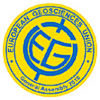
EGU 2010
| MR in Geosciences
The European Geosciences Union plans to keep its 2010 annual union May 2-7 in Vienna (Austria) and, like last year, there will be a Session dedicated to magnetic resonance applications in the field. Actually the Session is an autonomous mini-symposium which was tremendously successful in 2009 and chances are that 2010 will be an encore.
A couple of decades ago, the notion of "NMR of rocks" appeared slightly amusing (I have grossly erred myself by treating it with a smirk a couple of times). Fortunately, less frivolous pioneers such as Robert J.S.Brown, Paul Callaghan, the late G.Cesare Borgia, Paola Fantazzini, Yi-Quiao Song, and many others, have persevered in developing the field to its current most respectable status.
The meeting's web site is not yet very detailed, but a recent e-mail from the organizers illustrates nicely the likely content of the session:
Session SSS21: Magnetic resonance:
new understandings and applications in soil and environmental science
Magnetic resonance techniques are nowadays widely applied as powerful analytical methods in different fields of modern science, medicine and industry. In fundamental and applied chemistry practically each chemical study, from the simplest organic molecules to complex molecular systems, leans upon data obtained by magnetic resonance experiments, carried out either on different nuclei (NMR) or on electrons (ESR).
In environmental sciences magnetic resonance techniques are used for a large variety of applications e.g. H/D exchange, relaxation measurements, binding-induced peak shifts, and full NMR structure resolution. Recent advances in electronics allowed the development of NMR on solids and semi-solid samples, as well as the evolution of in situ NMR equipments. In addition to classical NMR applications, magnetic resonance imaging (MRI) of soil-water and tracer transport processes in soil (e.g. spatial and temporal changes of soil-water distributions or the movement of wetting fronts, root growth and water uptake) and NMR relaxometry and diffusometry for pore space exploration in natural porous media are important fields in the study of soils.
The focus of this session is on application of magnetic resonance techniques like NMR, MRI, relaxometry or ESR in soil science. In particular, contributions related to molecular properties of natural organic matter, understanding contaminant environmental fate, evaluation of soil properties as affected by waste disposal, petroleum chemistry, assessment of archaeological soils, soil-plant interactions, water and tracer transport processes in soils and pore space exploration by relaxometry/diffusometry will be acknowledged.
|
November 21, 2009

Cu+Ni fabric
| RF and EMF screening materials
Those who have tried to construct a truly broad-band Faraday cage in order to screen-off undesired radiofrequences (RF) and low-frequency electromagnetic fields (EMF) know how difficult and frustrating such a task can be. MRI installations, in particular, should lock out any outside EMI (electromagnetic interference) but attempts to do so are costly and the results are often disappointing. That is why I want to report here about a Chinese manufacturer of RF screening materials whose products appear to me quite interesting. However, it is not my intention to promote any single manufacturer to the detriment of others - if you manufacture similar products, drop me a line and I will be glad to amend this entry.
The manufacturer is China Defence Technology Co and, despite the menacing name, their catalog includes eminently civilian products, down to such items as screened soft-cases for mobile phones and RF-screened clothing. From the MR point of view, the most interesting item is probably the soft fabric with high electric conductivity. It contains nickel (ferromagnetic), so one must be careful about using it in the probe area but, for the same reason, it could help to block not just RF, but also static and low-frequency magnetic noise. This is an excerpt from an e-mail I have received from one of their CEO's:
... China Defence Technology Co is located in Jinan City, Shandong province. We are a high-tech enterprise specializing in the development and manufacturing of soft electromagnetic shielding materials for EMI/EMC applications, as well as some finished items. Our main products include highly conductive fabric, net yarn, sponge and adhesive tapes, but also mobile shielding bags, wallet/passport anti-degaussing cases, etc.
The fabrics were tested at the facilities of the PRC Ministry of Space Industry and reached 80 - 90 dB in shielding efficiency and 0.05 - 0.01 Ohm/sq.in surface resistance and have been subsequently used in the Chinese FY-2 weather satellite. We have thus reached and surpassed international standards and our products are fully in line with the European ROHS standard.
... Zhu Jing
Interesting. Actually, I might buy one of those soft wallet anti-degaussing cases to protect my credit cards ...
COMMENTS:
2 Dec 2009: Steven Ford from Professional Imaging Services
Stan, there are several manufacturers of copper alloy 'fabric'. It's used in the MRI world by Esaote on their c-scan extremity MRI as an extension of the shielding around the coil, and strapped snugly to the patient's leg or arm. For extremity MRI systems, the primary way that noise gets into the image is through conduction from the antenna effect. You can buy this stuff in small quantity. The web site www.lessemf.com
has it as well as other useful stuff. This web site is definitely for the aluminum-foil-hat crowd, though. Great resource for detecting the paranormal and getting that shielded underwear!
Regards, Steven Ford
3 Dec 2009: Stan
Thanks, Steven, the pointer to the EMF-screened-knickers-shop is certainly most welcome, though California and Italy are a bit too distant for me to run there every other morning. But you are right, producers of moderate-size copper sheets/foils and of copper-ized fabric are not so rare. I will check with the ESAOTE guys in Genova (that's close to my place) where they buy their conductive fabric. Since they put it inside the magnet gap, it must not contain nickel.
The Chinese stuff struck me because you can buy enough big rolls of it to cover a whole room (in which case its nickel content might be useful, I think). I would also like to experiment once with wrapping a HR-NMR spectrometer's supercon with that kind of "clothing". It might reduce any magnetic-field noise inside and even boost the field up a few Hz (though there is no merit in the latter effect).
When it comes to disturbances in the signal, you are right that noise brought in by conductors from external pseudo-antennas is very often the worst offender. On NMR spectrometers and relaxometers the most common way huge disturbances get in is through the thermocouple used to measure/control the sample temperature - a case in which the "antenna" is the VT controller (especially when switched OFF!). Once I fought against terrible noise in a lock channel until I found out it was a PC in an adjacent room whose radiation got caught by the VT unit's case and delivered to the probe through the thermocouple. As soon as the people in the other room turned that particular PC on, the NMR spectrometer's lock went down! Who knows, maybe applying anti-EMF panties (XXL size) to those PC and VTC units would have helped.
Though I doubt it. My experience is that if you leave a hole somewhere, the EMI will find it!
It is intelligent enough to figure it out!
|
November 19, 2009
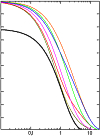
Click here for an
illustration
| An inequality for multi-exponential decays
This entry regards a simple inequality for multi-exponential decays which I find cute, even though at this moment I do not know what to do with it. It is a straightforward consequence of the well known fact that, given any set of non-negative real numbers, their arithmetic mean can not be smaller than their geometric mean. As such, the inequality is too elementary for a full-fledged paper. Yet it occurred to me as a kind of surprise so maybe some of you will appreciate it as well - and possibly find a use for it.
There is an elementary math theorem according to which, given an arbitrary set c of n non-negative real numbers c = {ci, i = 1,2,...,n}, the following inequality is always valid:
(1) [Σi=1:nci]/n ≥ [Πi=1:nci]1/n = G(c),
where G(c) denotes the geometric mean of the set c.
Now suppose that each ci is a product of two numbers: a weight wi and a decay factor di. Then (1) gives:
(2) Σi=1:nwidi ≥ n G(w) G(d)
Finally, setting di = exp(-rit), where ri is a decay rate and t is time, we obtain
(3) S(t) = Σi=1:nwiexp(-rit) ≥ n G(w) exp[-A(r)t],
where A(r) = [Σi=1:nri]/n is the arithmetic average of the decay rates ri.
In S(t) we recognize a multi-exponential decay with n components whose weights are wi and decay rates ri. On the right-hand side we have a mono-exponential decay with the weight W = nG(w) and the decay rate R= A(r). Now, it is not surprising to find a mono-exponential decay which acts as a lower bound for S(t): take, for example, W = min(w) and R = min(r) or, as another extreme,
W = Σi=1:nwi = S(0) and R = Σi=1:nri.
What is a bit surprising in (3) are two facts: First, given any fixed values W and R, it can be easily shown that there exist compatible sets w and r for which the inequality becomes at some t an equality. This means that the inequality can not be made any sharper. Second, the right-hand-side factorizes the weights and the decay rates - it holds no matter how the wi's and the ri's are mutually paired. You can check that, in order to minimize S(t) and thus cut the inequality really close, the largest weights should be combined with the fastest decay rates. But no matter what you do, the inequality will always hold.
Finally, notice that if "t" were replaced by "t2", inequality (3) would still hold, meaning that it applies to Gaussian decays as well as to the exponential ones. Many such extensions of the inequality are in fact possible though, sincerely, I have some doubts about their practical usefulness.
|
November 16, 2009
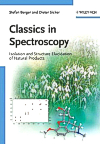
Paperback
Hardcover
| A book I missed and NMR in Leipzig
A friend has reprimanded me recently because I have failed to report on the book Classics in Spectroscopy: Isolation and Structure Elucidation of Natural Products by Stefan Berger and Dieter Sicker. It is true, I saw it and inserted it in the list of spectroscopy books but, having missed NMR in the title, I did not realize right away how heavily it relies on NMR and did not list it among the NMR books. In fact, Stefan Berger is a distinguished NMR spectroscopist in Leipzig (Germany) and his book is crammed with excellent NMR of both research- and educational-class variety. Have a look at the table of contents and if you are an NMR-using chemist of any kind (not just a natural products buff), buy it! After all, Stefan is also a co-author of the popular book 200 and More NMR Experiments, so he is incapable of avoiding NMR even while talking terpenoids, not even if he wanted to.
Mentioning Leipzig brings to my mind a few facts and a very old memory.
The facts regard the MRZ (Magnet Resonanz Zentrum) which, observed from the Net, is a large, busy thing combining disparate NMR, MRI and ESR activities of many groups, classified as partners (Mitglieder). My knowledge of these exceeds zero in just three cases (my fault, of course, I should go and visit them).
One is of course the group of Stefan Berger and his colleagues who use traditional NMR spectroscopy to tackle chemical problems. These days Stefan must be busy organizing the International Summer School on Molecular Spectroscopy which will be held next August close to Leipzig and dedicated to Fascinating Spectra of Magic Compounds: Isolation and Structure Elucidation of Natural Products.
The second group is that of Jörg Kärger from the Department of Interface Physics. Jörg is the co-factotum, so to say, of Diffusion Fundamentals and the respective open-access Journal which I have mentioned just a few days ago.
The third group I know a little bit about is that of Jürgen Haase who holds a chair in Experimental and Solid-state Physics and is actually the Herr Direktor of the MRZ facility. The reason why I know about Jürgen is that a few years ago he stayed in Dresden where he was busy building ultra-high, pulsed field magnets and broke the record of the highest-field NMR signal ever measured (deuterium at 58 Tesla)! I wrote about it on this blog in a 2006 entry. That Guinness-like landmark still stands, I believe, and Jürgen must be up to something similar in Leipzig, considering the title of his talk at a recent MDR meeting (Highest Pressures, Highest Fields, Smallest Probes).
The MDR meetings (Mitteldeutsches Resonanztreffen) are another Leipzig NMR staple. They are regional, German spoken events held twice a year (the last one took place a week ago). They are intended prevalently, but not only, for NMR specialists from the close-by German Länder.
Finally, the old reminiscence of mine: I was in Leipzig only once, in the Spring of 1968. I had freshly finished my PhD in Prague (Czechoslovakia) and, among other things, I was doing routine NMR service for chemists on a CW HR-NMR Jeol 60 MHz spectrometer (basically telling them all the time their samples did NOT contain the functional groups they insisted MUST be present). The great NMR names in Leipzig (and not only there) were at that time Artur Lösche and Harry Pfeifer and when Artur showed me his NMR lab, my eyes opened wide. Here was a guy doing NMR of 2 liter samples at - and around - zero magnetic field, with the "probe" at the empty center of three orthogonal "magnet" coils surrounding it, each a thin torus about 2 meters in diameter and just about 10 cm thick (you could step in the middle). For a physicist like me it was like discovering there was water in the Sahara after all - and NMR was not just a trap irritable chemists used to enslave young physicists! I now realize that in 1968 Leipzig must had been still badly scarred from the War, but in my recollection of that visit everything was just GREAT - the town, the people, the University, the lab, all of it!
This visit, together with a nice talk about spin echoes Erwin Hahn gave in Prague a few months before, affected me a lot and made me stick to NMR for the rest of my life. There is something in Leipzig that makes the town NMR-friendly. Did you know, for example, that the great Felix Bloch did his PhD there? At that time NMR was yet to be discovered, but maybe its germs were already in the Leipzig air and he caught the infection.
In any case, I hope I made up for having shamefully missed Stefan's book.
COMMENTS:
22 Nov 2009: Stan (post-scripts)
One important thing I missed again and for which I would certainly get reprimanded once more by several friends: Jörg Kärger and Petrik Galvosas are organizing the 10th Bologna Conference on Magnetic Resonance Applications to Porous Media (MRPM 10) to be held in Leipzig next year on September 12-16. Moreover, this will be a joint event, including the 10th Colloquium on Mobile NMR (CMMR 10). So it looks like 2010 will be a kind of NMR ecstasy year for Leipzig!
|
November 12, 2009
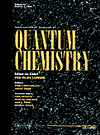
Free issue
| Quantum Chemistry and NMR
International Journal of Quantum Chemistry is offering free of charge all the articles in a November special issue (Volume 109, issue 14) which wraps up the Proceedings from the Sixth Congress of the International Society for Theoretical Chemical Physics (ISTCP-VI).
There are at least two articles dedicated to NMR:
- T.Thonhauser, D.Ceresoli, N.Marzari,
NMR shifts for polycyclic aromatic hydrocarbons from first-principles
pp 3336-3342, doi 10.1002/qua.21941.
- E.Zurek, J.Autschbach,
NMR computations for carbon nanotubes from first principles: Present status and future directions
pp 3343-3367, doi 10.1002/qua.22211.
For those who are curious but not directly involved in these matters, quantum chemistry (QC) is used in NMR to predict, using ab inizio calculations, chemical shifts (both the tensors and their isotropic parts) and scalar coupling constants. The discipline was established by Willis E. Lamb in 1941 (doi 10.1103/PhysRev.60.817), five years before the detection of NMR in "bulk matter" (the concept of chemical screening was coined in molecular beam magnetic resonance studies). Lamb proposed the first formulas, advocated the use of quantum theory and showed that the screening constant was bound to grow with the 4/3 power of the atomic number Z (statistically still true). It took the discovery of NMR plus a few years before people started thinking about molecules. The following table shows the absolute screening values for the hydrogen molecule computed before 1960 (the true experimental value is close to Ramsey's 26 ppm):
At that time only very small molecules could be handled and, overall, the situation was much worse than in H2. Discrepancies of the order of 10 ppm between experimental values and the "predicted" ones were common, even for protons (for example in FH).
What usually interests us most are the chemical shifts, defined as the differences between screening constants of the same nuclide in different chemical surroundings. Predicting the shifts with any useful precision is therefore even more difficult. After nearly 60 years of hard work the average errors for protons are below 0.2 ppm (in organic molecules; inorganics are more difficult). To me, this is impressive, considering the outrageous approximations inherent in QC methods, be they antique or recent, such as the density function theory (DFT). However, we occasionally encounter errors over 1 ppm and quite frequent, pesky inversions of the chemical-shifts order in most organic molecules exceeding about 200 Daltons in size. There are many reasons for such discrepancies, including stereochemistry doubts, rotamers equilibria, and plain assignment errors in published experimental data (life is never simple). Companies specializing in prediction software often artfully combine various approaches (not only QC) to achieve the best predictions. To try these out, you might download a trial version of the NMRPredict package from ModGraph, for example.
To read more about the craft, I suggest the open access article by Ray Abraham and Mehdi Mobli, The prediction of 1H NMR chemical shifts in organic compounds in Spectroscopy Europe.
COMMENTS:
16 Nov 2009: Stan (post-scripts)
- Some interpret DFT as Damn Fine Theory. I guess I be more respectful about it :-)
- I really loved COBALT. But did it beat the chemical shift inversions ???
- If you don't mind spending a bit on serious DFT computing, try out SCM.
They do not list NMR as a priority, though ...
|
November 9, 2009

C6H5NO3
See spectra 6,7,8:
Everything clear?
| A historic set of 60 MHz NMR spectra
Nearly one year ago I have obtained a permission from Varian Inc in Palo Alto to re-edit and put online some of their ageing catalogs of NMR spectra. I planned to finish for the 50th ENC (!) but, due to all the usual factors, I am starting only now. There will be other spectra collections from various Companies, but I must start with Varian and hope to finish before their Company setup changes (who knows, maybe Agilent might not like me to do this).
Since the plan is to set up an Online Collection of NMR Spectra Catalogs from various manufacturers and other sources, I thought it was appropriate to start with the now historic set of 60 MHz NMR spectra acquired on the Varian EM360 continuous-wave (CW) high-resolution spectrometer based on a permanent Alnico magnet. Incidentally, while most catalogs of spectra are born to illustrate the quality of an instrument, this collection was from the beginning intended as a set of exercises to train chemists in the tricky trade of NMR spectra interpretation. I find it reassuring that it is still pretty much up to that task.
You might of course wonder whether it makes sense to re-publish old NMR data. Apart from the fact that cyberspace is infinite and it is better to populate it with spectra than with naked ladies, the answer is contained in my preface to the Collection:
In my opinion old spectra catalogs are not at all useless. It is true that the instruments and the techniques of yesterday may be quite obsolete today and that present performance specifications are usually much better than what they were years ago. This preempts the commercial usefulness of old spectra catalogs to the Companies who originally put them together. But there is always so much to learn when browsing through old experimental data! They are ideal for illustrating the basics of the various techniques from a historic perspective, underlining whatever progress has been achieved, and pointing out any problems which might still be with us. A researcher who does not understand historic data and long discarded techniques probably does not really comprehend modern techniques as well. In addition, Science spirals ahead through loops - there is always a going back and a recycling of old ideas in new contexts, so one never knows what data will become useful as a reference or even just as a kind of quality check.
The quality of the scanned PDF reproductions of the ageing booklets is not always the best but it should be still quite sufficient to fulfill the educational and historic purposes (any help in this respect would be most welcome).
|
November 3, 2009

| Free info about Diffusion and NMR
If you are interested in diffusion and its effects on NMR/MRI signals, no matter how marginally, you should regularly visit the free online Journal Diffusion Fundamentals, managed by an academic organization of the same name at the University of Leipzig (Germany). Diffusion Fundamentals carries frequent articles on NMR-related and/or NMR-enabled studies. In particular, its latest issue (#10 of 2009) contains the proceedings of the 9th International Bologna Conference on Magnetic Resonance in Porous Media (MRPM 9, July 2008, Cambridge MA, USA).
Diffusion Fundamentals is listed in the Directory of Open Access Journals (DOAJ, managed by Lund University Libraries) and adheres to the Budapest Open Access Initiative (BOAI). I can't help but add a most sincere "God bless them all" and invite all of you to visit the BOAI site and join the movement. I just did so - both as an individual and on behalf of Stan's Library.
|
November 1, 2009
| Signs of geminal HH and HD couplings
While writing the previous entry I could not avoid noticing that the Cambridge Isotope Laboratories solvents chart lists all the JHD values in methyl and methylene groups as positive. However, since geminal (two-bond) JHH scalar couplings in such groups are universally negative (typically -12 to -20 Hz), and since deuteron has a gyromagnetic ratio of the same sign as proton, JHD values, 5.536 times smaller that the respective JHH, should be negative as well (unless I am totally senile, of course). Alternatively, it should be stated that absolute values are listed.
I know that in current NMR spectroscopy routine the signs of those J's do not really make any difference and that many people would not know how to determine them, but that is no valid ground for discarding scientific rectitude. Moreover, it might yet change ...
COMMENTS:
5 November 2009: Claudio Tormena (Unicamp, Brazil)
Dear Stan,
I appreciate very much your comments about signs in geminal couplings. It is very good to highlight the importance of signs in coupling constants. However I would like to mention that geminal coupling constants in CH2 group is not always negative, since for three-membered epoxide ring the geminal coupling is positive. Please see the J.Phys.Chem. A, 108, 7762-7768 (2004). All the best, Claudio.
7 November 2009: Stan
Touché! When I commented on the values of geminal couplings in methyl and methylene groups I had in mind near-aliphatic situations with no special steric constraints, no adjacent conjugated systems and other special situations. A look at this small database of Hans Reich reveals that intra-methyl couplings are always negative, while in other groups there are all kinds of geminal 2JHH values, spreading from +40 Hz (for H2C=O) to -22.3 Hz (in a molecule I can't name), with a statistically most populated interval between -12 to -20 Hz. When it comes to methylenes in three-membered rings, their severely constrained hybridization makes them often behave in a strange way and, indeed, the geminal couplings in such systems can be quite unpredictable. There is also the fact that an adjacent oxygen drives the value towards positive values. But all that goes far beyond the point I was making.
|
October 31, 2009
| Storing d-chloroform and other NMR solvents
Reading a nice recent paper on NMR Quantitation of Natural Products at the Nanomole Scale (doi 10.1021/np900009b) written by Doralyn Dalisay and Tadeusz Molinski, I have noticed their recommendations on storing some deuterated NMR solvents which, I am sure, should be of interest to all managers and users of NMR spectroscopy laboratories. This is what the authors have to say:
Care should be taken with the handling and storage of enolizable NMR solvents (e.g., d6-acetone) that may undergo deuterium exchange with adventitious H2O and alter the residual protonated isotopomer content. This will be of special concern for NMR measurements of samples that are appreciably basic or acidic, although under neutral conditions exchange should be negligible.
and, among the references and notes:
Other simple experimental precautions should be taken. For example, the common habit of storing CDCl3 over anhydrous K2CO3 should be avoided to prevent erosion of deuterium content and increase in CHCl3 levels as a result of base-catalyzed exchange with adventitious H2O.
Generic instructions on handling NMR solvents can be found in a public web document at the Cambridge Isotope Laboratories web site. Should anybody have further useful recommendations, please share them with us!
Personally, I would be most interested in any rules anybody has devised for handling the solvent delivery from the storage bottle to the sample tube. From my [clumsy] experience, I would say that this is the most critical step when it comes to isotopic and/or moisture contamination of both the storage and the sample.
|
October 17, 2009

| An NMR Laboratory Store on Amazon
July 2017: This is now history. Amazon (and me) have discontinued the Stores.
You have probably noticed that, since a few weeks, there appeared links on this site to an NMR Lab Store. This is a shop I have established on Amazon which, I hope, will become a useful service to all MR practitioners living in Countries where Amazon is present.
You are probably aware that Amazon sells today a lot of stuff, not just books. It is possible to buy from them almost everything that one should keep handy in an NMR lab except (so far) the NMR instrument itself. They have cleaning tools and disposables, soldering tools, sample tubes, tube stands, bookshelves, fire extinguishers, voltmeters, thermometers, oscilloscopes for tinkering post-docs and forgetful visiting engineers, etc. If you order anything through the shop, you will be using an Amazon virtual shopping cart and pay at Amazon virtual cash register, and have the (non-virtual) goods delivered right to your lab.
As a shopkeeper, I will try hard and keep the premises tidy, nicely partitioned into logical categories, and as up-to-date as possible. It is obvious that I do this for profit - when you buy anything through the shop, you pay the standard Amazon price, but I get a small commission. I apologize for this venal touch of this entry, but I have to live on something just like everybody else. To reciprocate, I will try to make the shop a really useful place. Of course, I have just started, so don't be overly critical about the quality of my choices. But I think that it is already not too bad. The books department, for example, is quite presentable.
If you help me by letting me know about any Amazon products you found particularly useful (or vexing), I will be grateful, spread the word, and use the feedback to improve the assortment. Also, if you are the manufacturer of any products that could be of use in an NMR lab and are already distributing them through Amazon (or planning to do so), let me know so I can display them on the store shelves (it will cost you nothing :-)
|
October 7, 2009
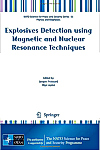
Fraissard, Lapina,
Editors
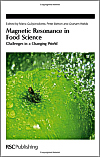
Gudjonsdottir,
Belton, Webb,
Editors
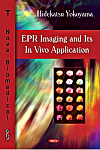
H. Yokoyama
| New Magnetic Resonance books
Over the Summer at least three MR books became available. Two are proceedings of meetings dedicated to special applications of NMR, while the third is a monograph on imaging techniques using EPR (or ESR, if you share my preferences):
Explosives Detection using Magnetic and Nuclear Resonance Techniques,
edited by Jacques Fraissard and Olga Lapina,
and published by Springer both as hardcover and as paperback.
This is a complete collection of the Talks and Lectures presented at the Workshop on NMR and NQR in spotting explosives, organized as a side event of the July 2008 EUROMAR Conference in Petersburg (Russia). I had opportunity to follow both these events and have written about them on this blog (July 30 and July 31, 2008 entries).
Though Allen Garroway and Vadim Sergeevich Grechishkin, the founding fathers of this MR thread were not present at the Workshop, virtually everybody else working in the field was there and therefore this very first dedicated monograph is likely to become a much cited historic milestone.
Compared with the moderate optimism prevailing at the time when I wrote my blog entry about Spin Resonance and Warfare, I now perceive a certain disillusion with the NQR (Nuclear Quadrupole Resonance) technique, due basically to the fact that the intensity of the measured NQR signals is just too small for most practical applications (particularly those which would need remote detection in Earth field). Fixed, near-detection devices are presently manufactured and used for the detection of specific explosives at security checkpoints (for example at airports) but incomparably more could be achieved if only the sensitivity were higher. However, a substantial boost in S/N ratios is not to be excluded (we are nowhere near the theoretical limits) so the last word on this point is yet to be pronounced.
Magnetic Resonance in Food Science: Challenges in a Changing World
by Maria Guðjónsdóttir, Peter Belton, and Graham Webb,
and published by RSC Publishing (the Royal Society of Chemistry).
Proceedings of the 9th International Conference on the Applications of Magnetic Resonance in Food Science which was held in Reykjavik (Iceland) in September 2008. NMR in food science and technology is of course a well established topic which involves almost all branches of Magnetic Resonance (predominantly NMR spectroscopy and relaxometry, but also ESR, MRI, and NQR).
EPR Imaging and Its in Vivo Application
by Hidekatsu Yokoyama, published by Nova Science Publishers.
This is a very practical book which essentially describes the experience accumulated by the Author while building his ESR imager suitable for the study of small-size animals. As such, it is bound to be extremely valuable to anybody who wants to start an ESR imaging lab and/or carry out any practical experiments in the field.
Note: To consult the TOC of any of these books, follow the Amazon link and hover over the book's image (upper left corner of the Amazon page). Select Table of Contents in the pop-up window which will appear.
|
October 4, 2009


Morning view
of Mont Blanc
and of the
Glacier
des Bossons
from Chamonix.
See more
| Glimpses of SMASH 2009
Having had again an opportunity to attend this meeting, let me say a few words about my impressions. My own first time at SMASH was in 2007 and, since I missed it last year in Santa Fe, I will be comparing this year edition (September 20-23) with the one held two years ago.
But first, let me point out that SMASH stands for Small Molecules Are Still Hot which explains this meeting's basic idea: NMR spectroscopy as a tool for the elucidation of spin systems and molecular structures of small-to-medium molecules, particularly those in the 200 - 400 Daltons range which are the bread-and-butter of pharmaceutical industries.
The 2007 and 2009 events were both held in Chamonix, France, which will possibly become a permanent location of the Conference (so far it was itinerant). The place, located just under Mont Blanc, is fabulous; almost too beautiful, in fact, for the work spirit of the attendees, especially in combination with the Conference mixer parties and cozy local bars.
Despite the economic crisis, the size of the Meeting is increasing: this year there were 214 registered attendees, compared with 185 in 2007. The organization is always perfect and yet unobtrusive. Traditionally, a substantial portion of the participants comes from industries. This batch amounted to 37% of the total, representing over 32 Companies. The largest delegations were fielded by Glaxo Smith Kline (10), Astra Zeneca (8), Pfizer (5), Eli Lilly (5), Sanofi-Aventis (5), etc. Another large chunk of registered participants (18%) was related to vendors (manufacturers and distributors of NMR instrumentation and consumables, many of whom have set up a proper exhibition booth). The largest groups in this category included Bruker (11), Varian (8), ACD Labs (6), and Mestrelab Research (3 + 3 collaborators). This is a Conference which vendors love since, due to the industrial vein of the meeting, their needs are kept in great consideration. Academic participants, however, still represent the largest group (45%) which means that conceptual innovations are also well covered.
I could not stay for the whole duration of the meeting but, since I was not particularly involved this year, I had nevertheless ample time to browse around the posters (over 60) and listen to several oral presentations. There were 24 talks of 30' each, organized in 8 Sections, including a Student and Post-Doctoral one, and one about Exotica. My feeling was that, understandably, the isolated small molecule is slowly drifting out of sight and the focus is moving ever more towards small molecules in complex mixtures (8 matabolomics-related talks) and small molecules associated with huge biomolecules. Solid-state NMR also still commands a lot of attention (I say still since I believe that this NMR thread has peaked and is slowly becoming routine). There were also four Workshops dedicated to Carriers in NMR (thumbs up), Hyphenation and Automation in NMR Lab (Varian with an Agilent angle?), Metabolomics (sic), and Pulse Programming, and one after-dinner talk (Serendipity in 40 years of NMR by David Davies).
The traffic around the vendors booths was intensive, though some were getting a much bigger share of it than others. I will not make this comment more explicit, but I was glad that the Mestrelab booth was abuzz all the time, since I collaborate with those guys and I gave a 40' talk at their User meeting. We are now tackling in earnest automatic molecular structure verification, a topic which arouses much interest from the same people who are fond of attending SMASH. You can download the slides of my talk, but if you wish to know more about the overall progress of Mestrelab's Mnova software (including Modgraph's NMRPredict), have a look at all the User meeting talks on a Mestrelab page.
Prior to the Conference proper, there were also User meetings held by Bruker, Varian, and ACD Labs but, since all took place at the same time, I could not attend them.
A pity, since I would have loved to.
|
|
Archive
| For a complete list of all entries since 2005, see the running INDEX
|
|
Visitor #

ADVERTISE with us
NMR, MRI, ESR, NQR
Companies
Societies
Centres & Groups
Journals & Blogs
References
Free Texts
History
Links
BOOKS Lists
MATH | SOFTWARE
PHYSICS | CHEMISTRY
ELECTRONICS | DSP
WWW | Patents & IP
SPECTROSCOPY
MRI | NMR | ESR
Instruments
ARTICLES
Scalar relaxation
Biography of F.C.Yu
Hebel-Slichter effect
MR Antenna Theorem
NMR Dead Time
One-Page MR Primer
K-space and MRI
S/N Perspectives
OTHER
SI Units |
Dimensions
Physics Constants
Science Links

Support this site!
SHOP from here:
COMPUTERS:
Deals
Bestsellers
Accessories
Calculators
This page is
SPONSORED by:


Random offers:
|